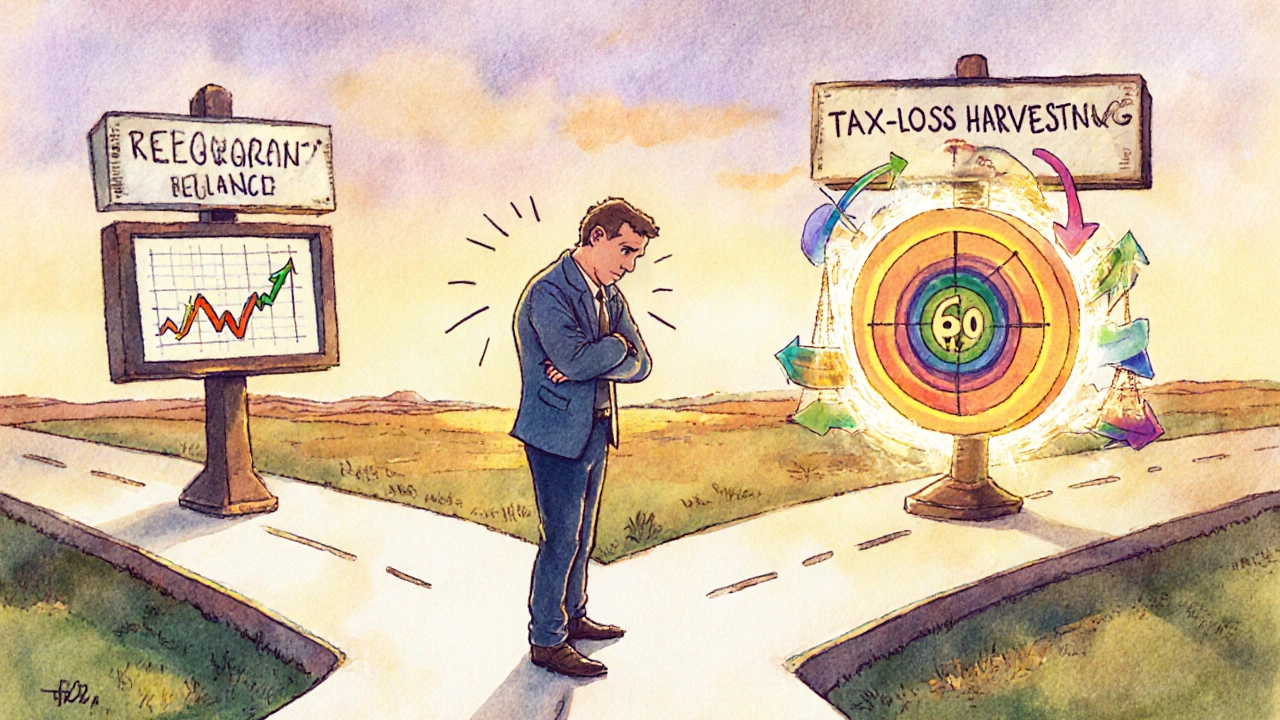Wash-Sale Rule: What It Is and How It Affects Your Tax Loss Harvesting
When you sell an investment at a loss to cut your taxes, the wash-sale rule, an IRS regulation that disallows claiming a tax loss if you repurchase the same or substantially identical security within 30 days before or after the sale. Also known as tax loss harvesting restriction, it’s designed to stop investors from booking losses while keeping their market exposure. If you violate it, that loss disappears for the year—and you can’t just carry it forward. Instead, you add it to the cost basis of your new purchase, which only delays the tax benefit.
This rule isn’t about fancy trading. It’s about timing. Say you sell 100 shares of VTI at a $2,000 loss because you think the market might dip. If you buy it back next week—even one share—you’ve triggered the wash-sale rule. The same applies if you buy a different ETF that tracks the same index, like VT or SCHB. The IRS doesn’t care if it’s technically a different ticker; if it’s substantially identical, it counts. Many investors don’t realize this applies to mutual funds, ETFs, and even options on the same underlying asset. And it’s not just your brokerage that tracks this—you’re legally responsible for reporting it on your tax forms.
What makes this tricky is how it connects to tax loss harvesting, the strategy of selling losing investments to offset capital gains and reduce taxable income. You can’t do it right if you ignore the wash-sale window. That’s why smart investors plan ahead: they swap into a similar but not identical asset—like switching from a broad-market ETF to a different one with slightly different holdings—or wait 31 days. Some even use this rule to their advantage by buying a different sector ETF temporarily, then switching back after the clock runs out.
It also ties into capital losses, the amount you lose when selling an investment for less than you paid, which can be used to reduce your tax bill. You can deduct up to $3,000 in net capital losses against ordinary income each year. Any excess carries forward. But if you accidentally trigger a wash sale, you lose part of that deduction—and now you’re stuck with a higher cost basis you have to track manually. That’s a headache come tax season.
There’s no gray area here. The IRS doesn’t make exceptions for emotional selling, market panic, or even automated trades. If you buy back within 30 days, the loss is disallowed. And yes, that includes buying in your IRA or Roth account—even if it’s a different account. Your brokerage might not warn you, but the IRS will find out.
What you’ll find below are real, practical guides from investors who’ve navigated this rule—whether they’re using robo-advisors that auto-harvest losses, trading ETFs to avoid wash sales, or adjusting their portfolio after a tax-loss event. These aren’t theory pieces. They’re battle-tested tactics from people who’ve been there: caught by the rule, fixed it, and now do it right.
Tax-Loss Harvesting While Rebalancing: How to Coordinate Moves for Better After-Tax Returns
Tax-loss harvesting while rebalancing lets you cut your tax bill while fixing your portfolio’s allocation. Learn how to do it right, avoid wash-sale traps, and boost after-tax returns by up to 1% a year.
View More